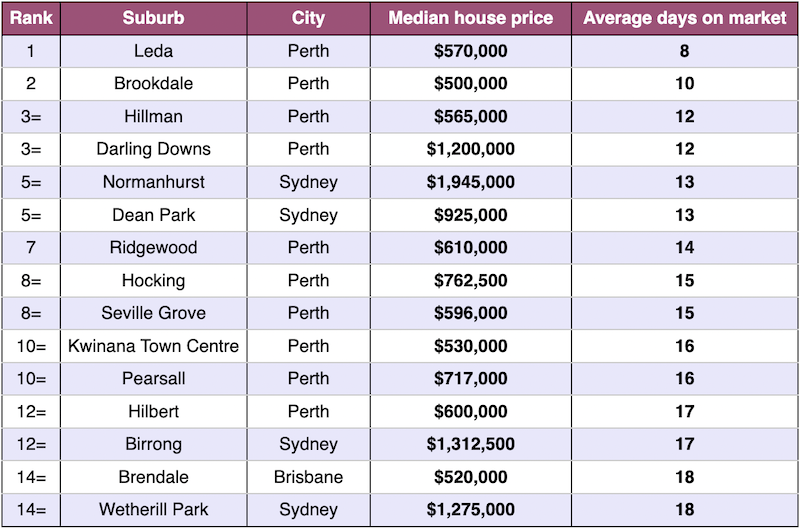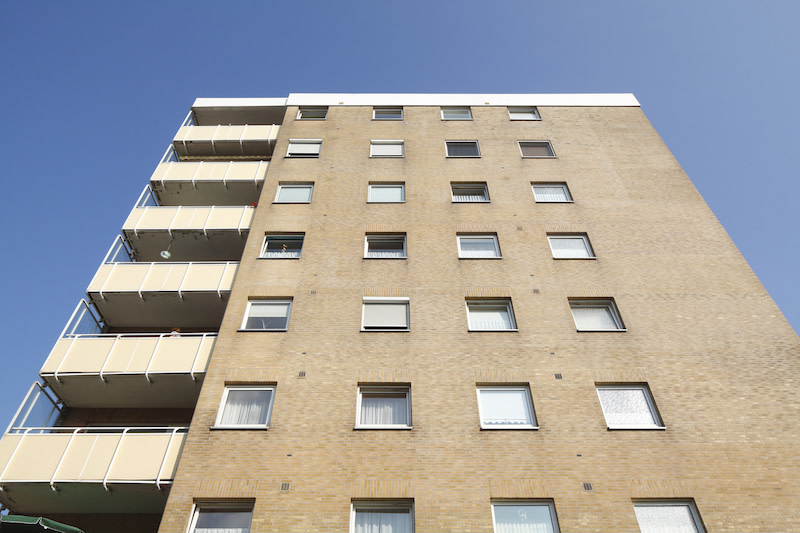Gone in Eight Days: WA Homes Australia’s Fastest-Sellers

Perth’s housing market is continuing to run hot with homes in one suburb spending an average of just eight days on the market.
A report prepared by MortgageBroker.com.au found that of the 15 fastest-to-sell suburbs, 10 were in Perth, with homes at Leda, about 40km south of the WA capital’s CBD, top of the list.
“The suburb is attractive to families, first-time buyers, commuters, and investors thanks to its proximity to major hubs and a wealth of amenities—all at a lower price than neighbouring suburbs,” the report, which looked at sales of the past year, said.
“With a median house price of $570,000, Leda is a hotspot for buyers, with 52 properties sold over the past year. In the past alone, nine houses were listed, attracting 241 interested buyers, resulting in a competitive 27:1 buyers-to-house ratio.”
Second place Brookdale had an average of 10 days on the market.
Brookdale, also south of the city centre, “offers some of the best value in the Perth metropolitan area,” the report said, “with a median house price of $500,000 and an impressive rental yield of 6 per cent”.
Two Perth suburbs share third place, Hillman and Darling Downs, with an average of 12 days on the market.
Hillman homes sell for a median house price of $565,000, while Darling Downs commands a much higher $1,200,000.
Australia’s fastest-selling suburbs

Sydney suburbs Normanhurst and Dean Park, round out the top five with both averaging 13 days on the market.
With 52 homes sold in the past 12 months, Normanhurst, 34km north-west of the CBD, has a median house price of $1,945,000 while at Dean Park, 40km west of the city centre, that price is $925,000.
The only Brisbane location to make the list is Brendale, at equal 14th with an average of 18 days on the market.
Offering a strong rental yield of 4.6 per cent, there were a notable 545 interested buyers vying for just six available homes in the past month in the suburb that’s about 20km north of the River City’s CBD.
Rental vacancies down
Meanwhile, home vacancy rates slightly fell across Australia to 1.2 per cent in September, according to SQM Research.
The total number of rental vacancies was 37,932 properties, a decrease from 39,665 in August.
Perth, Canberra, and Hobart as well as regional Australia were the main drivers of the decline—all other capital cities were steady or recorded slight rises.
Sydney’s rental vacancy rate remained stable at 1.6 per cent, with 11,360 rental homes vacant while Melbourne’s rate increased to 1.7 per cent, with 8796 vacant homes, a 0.1 per cent rise from August.
Canberra had the highest rental vacancy rate among the states and territories at 2 per cent, a slight decrease from August.
Perth vacancies decreased to 0.6 per cent, while Darwin’s rate increased to 1 per cent.

Adelaide maintained one of the lowest vacancy rates at 0.6 per cent and Hobart’s vacancy rate declined to 0.8 per cent.
“Regional markets were the primary driver of the drop in vacancy seen over August, with Australia’s combined regional areas shedding 0.10ppt to reach 1.19 per cent,” SQM said.
“In contrast, vacancy across the combined capital cities held relatively steady over the month, dipping by just 0.01ppt.
“Though capital city vacancy was steady overall, there were significant differences by state, with Melbourne and Brisbane recording a rise, while Perth, Hobart, Darwin and the ACT all recorded declines of 0.10ppt or more.
“While vacancy rates were down in most capital cities over the month, they remain higher compared to 12 months ago in every market bar Darwin and Hobart.
“Despite this, conditions remain extremely challenging for renters, with vacancy at sub-2 per cent levels in every market.”















